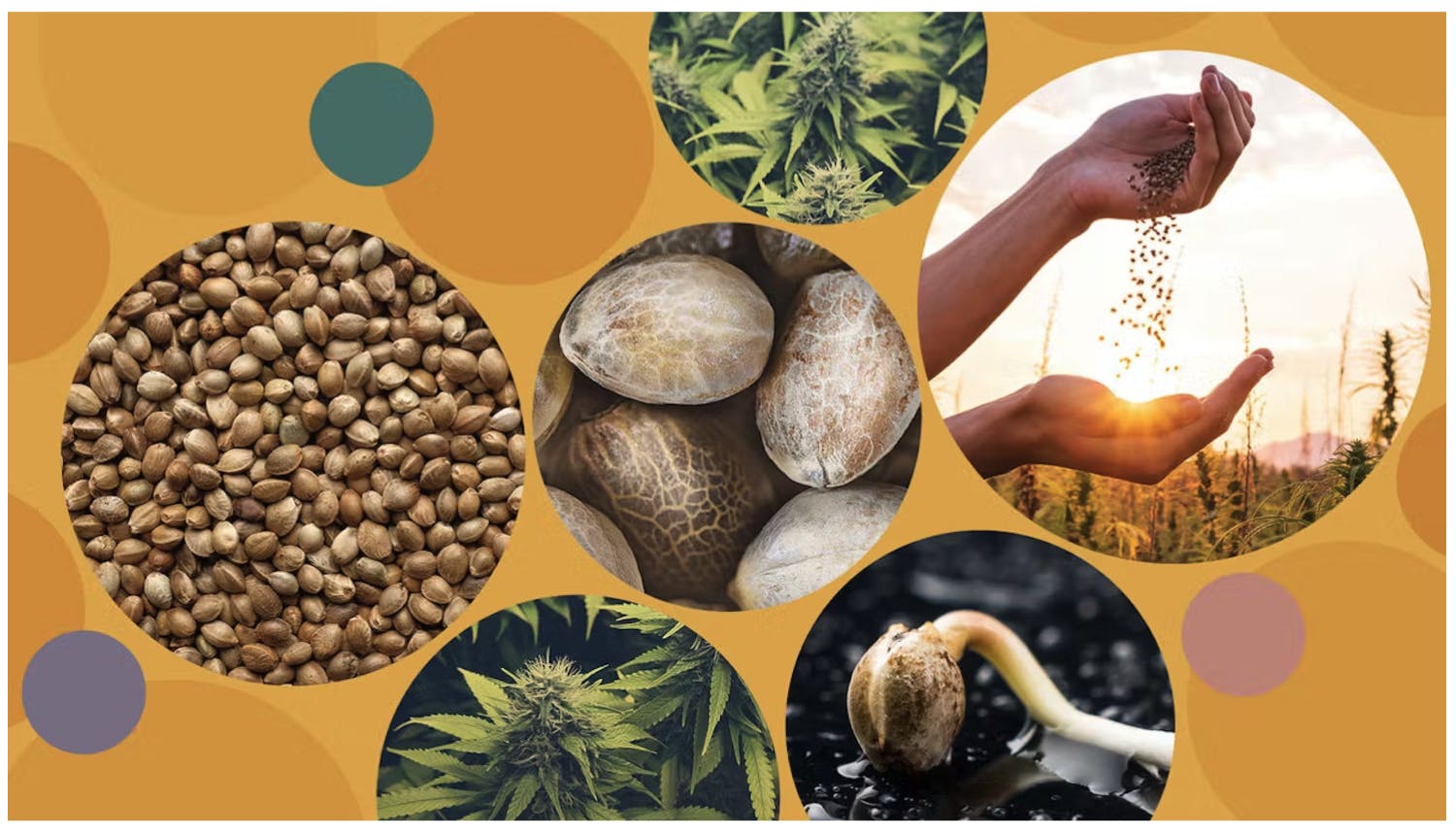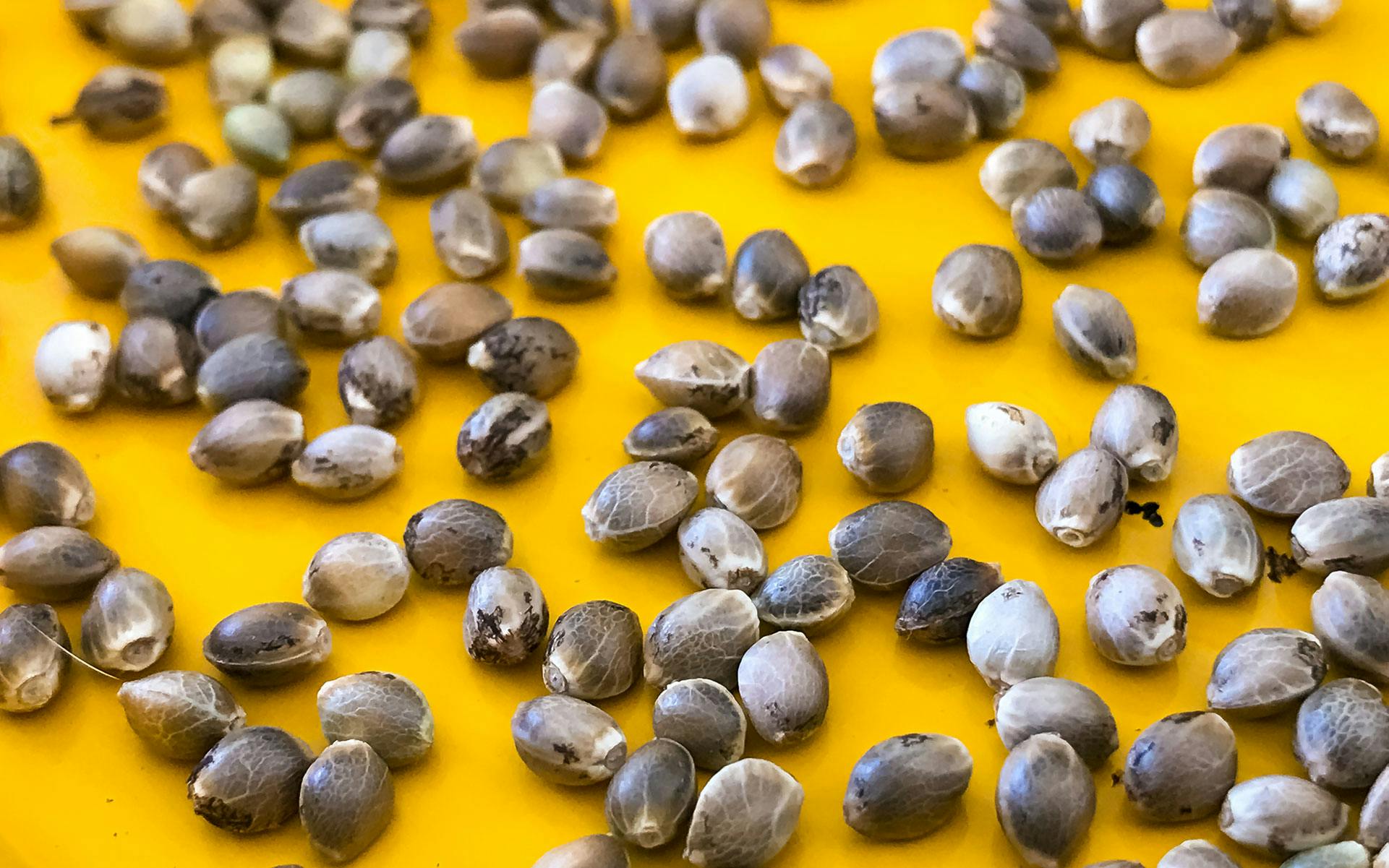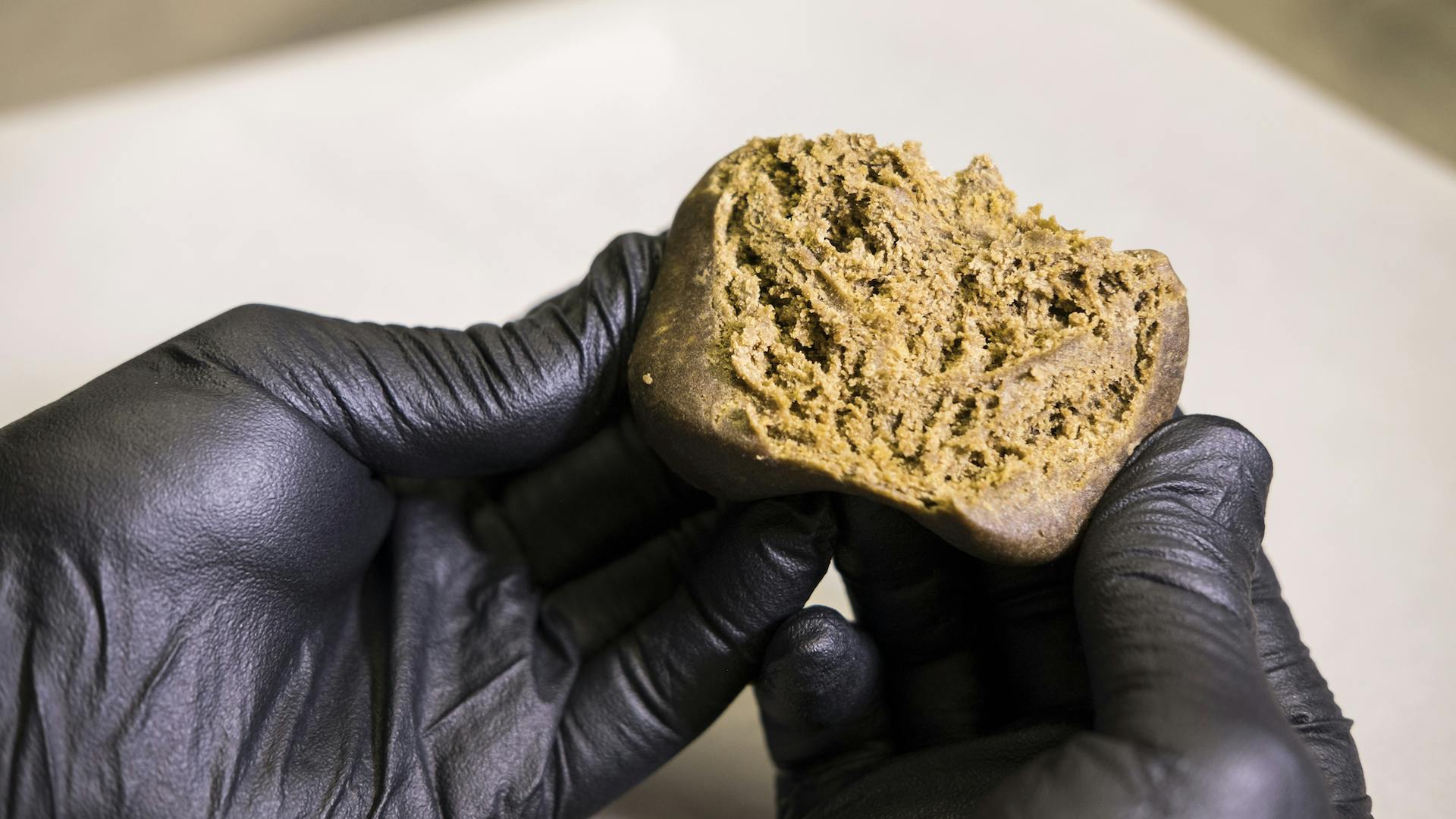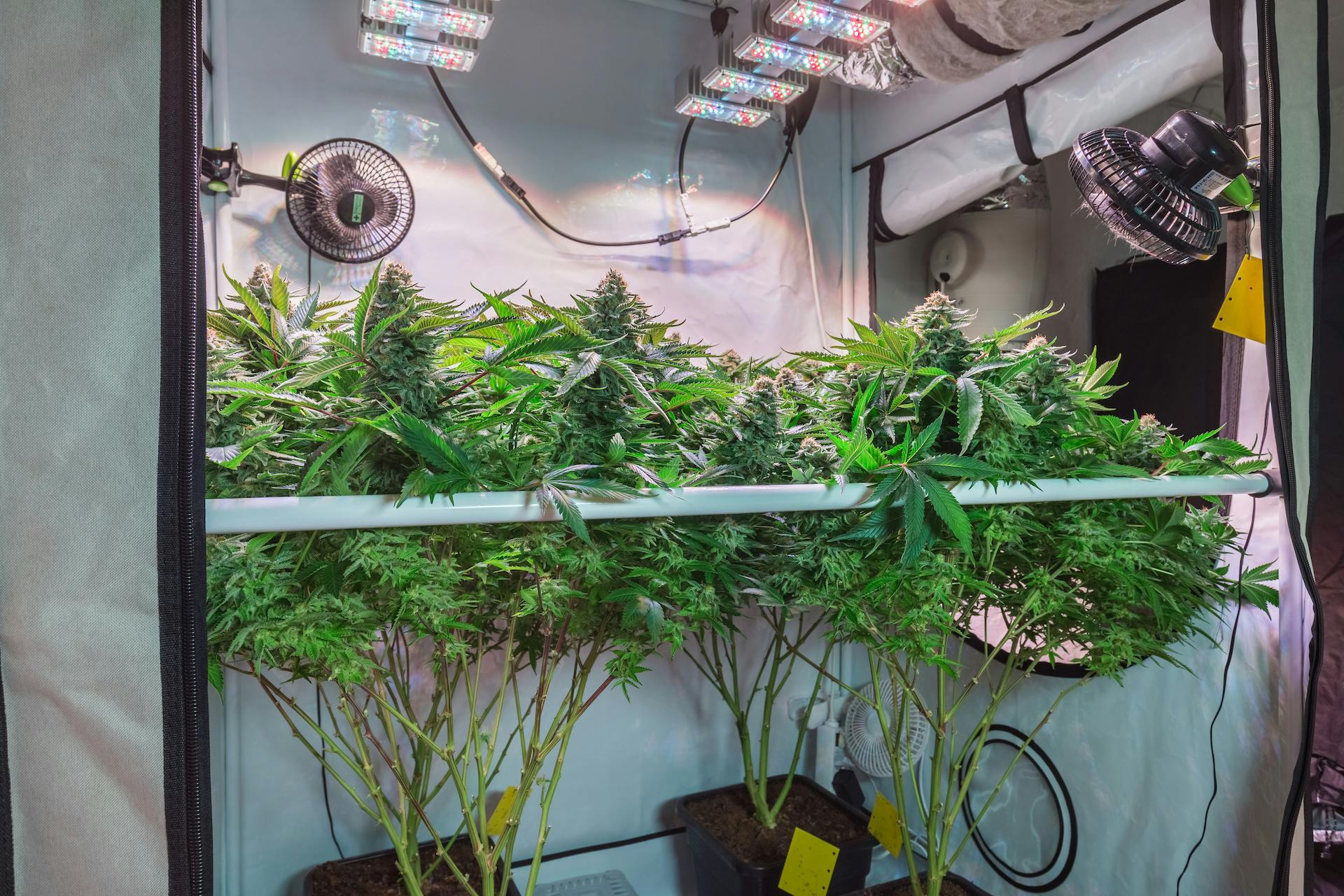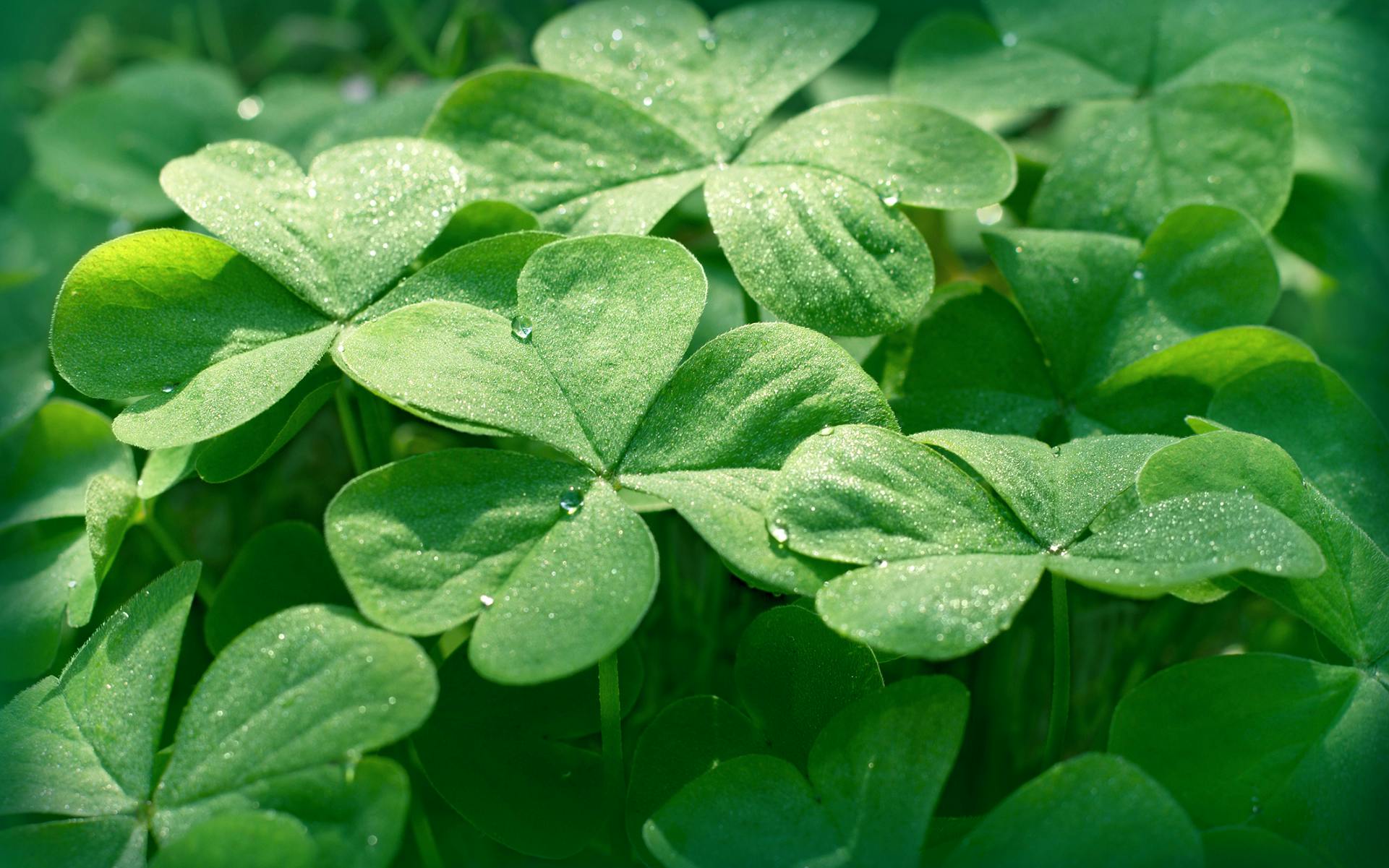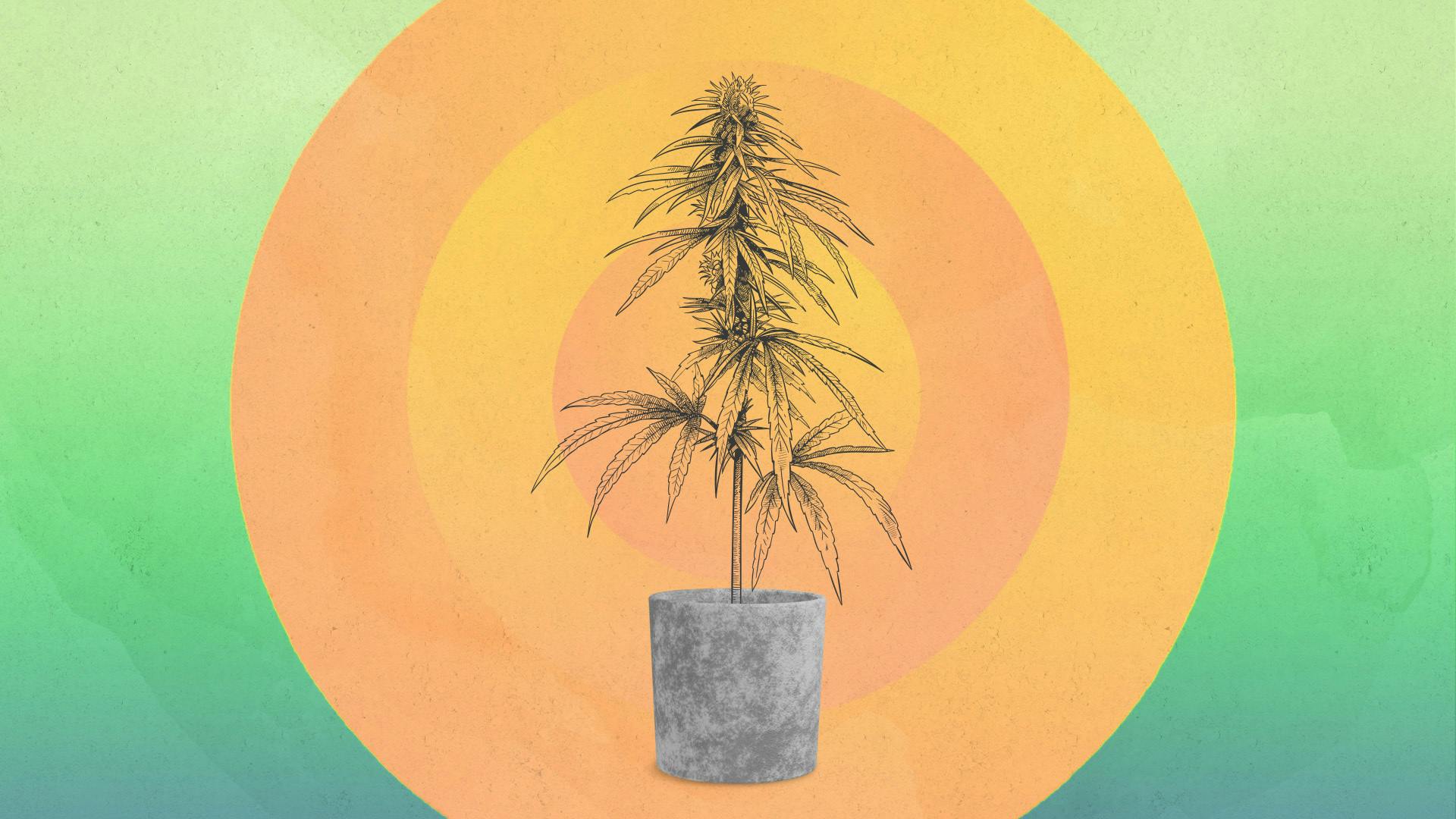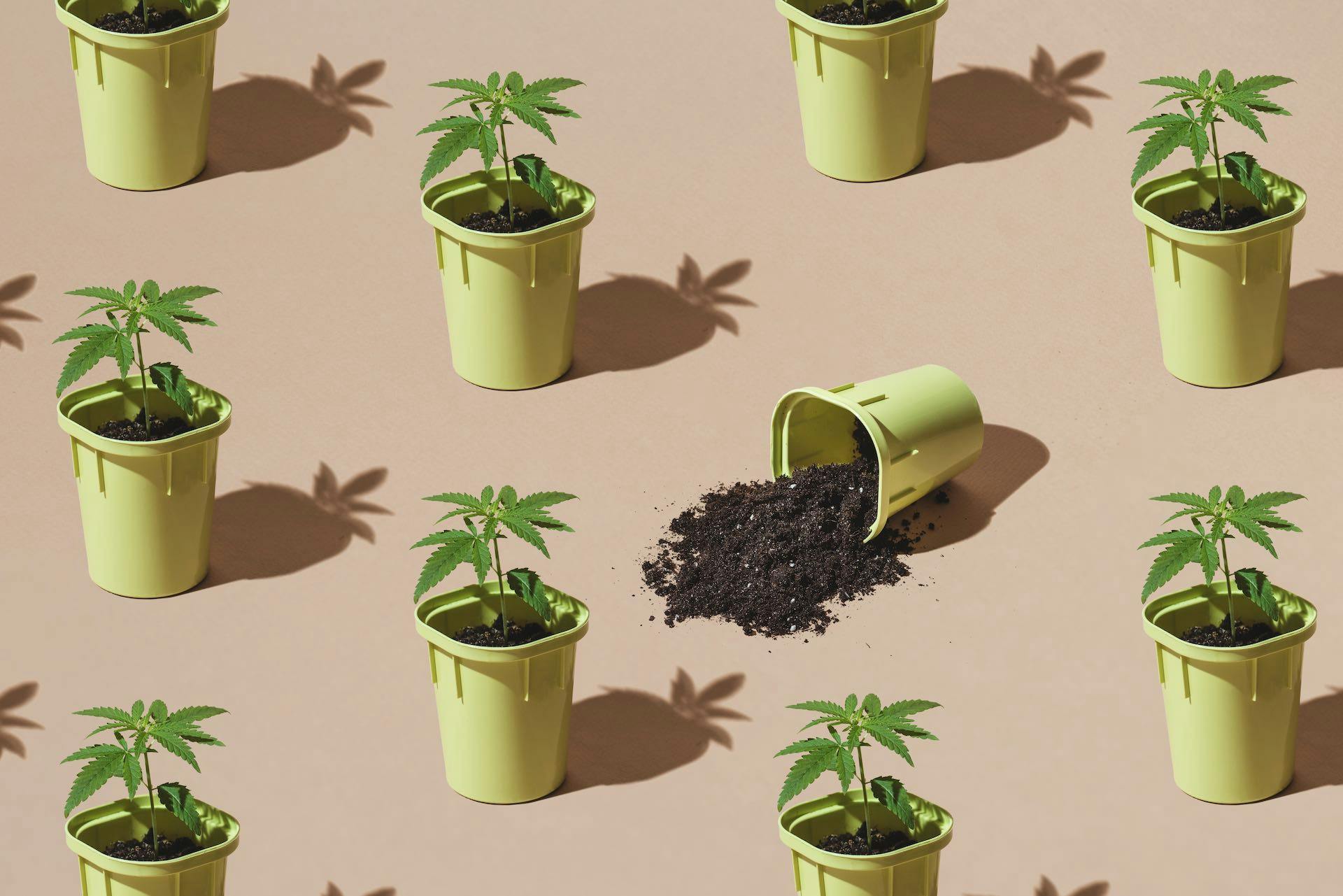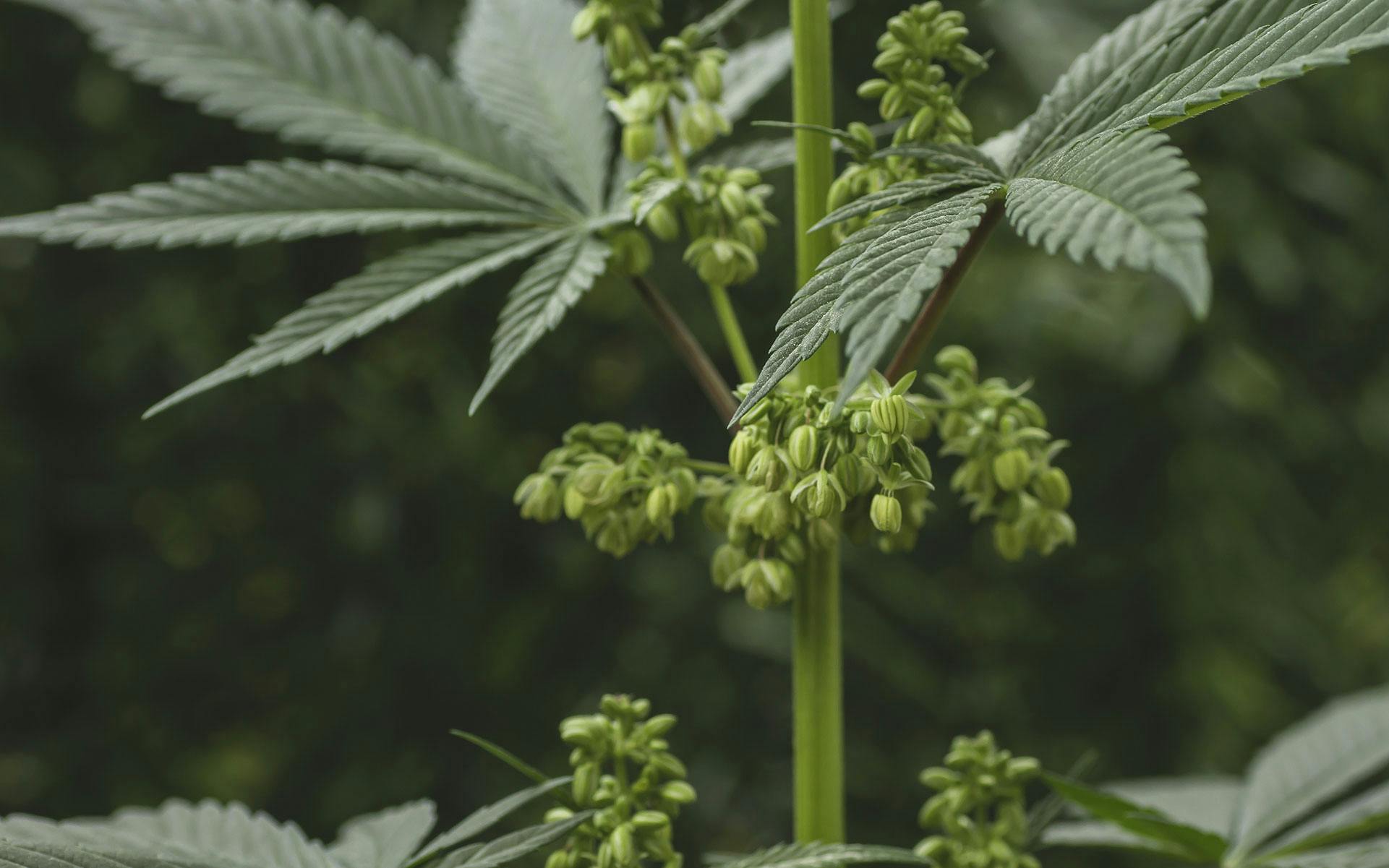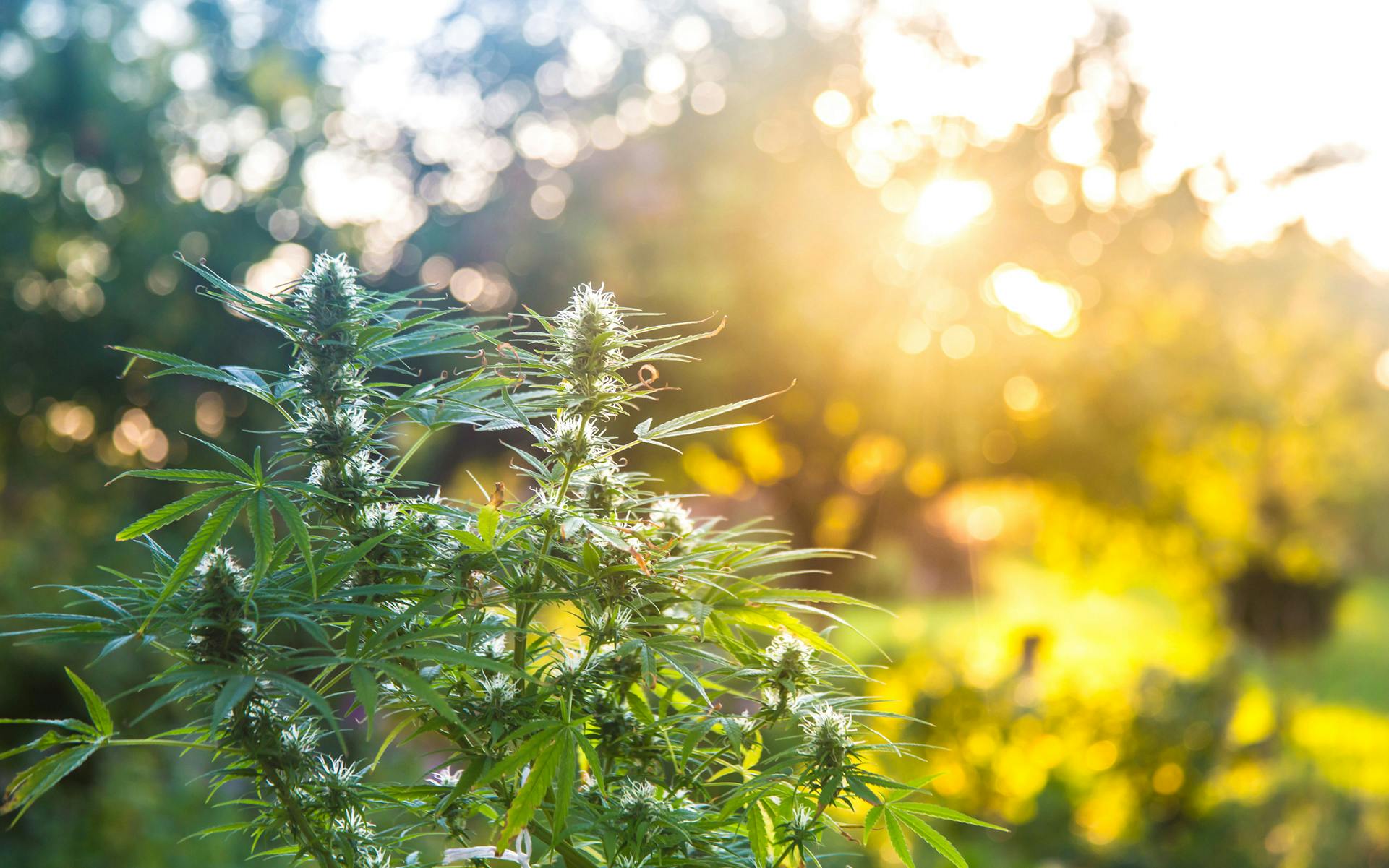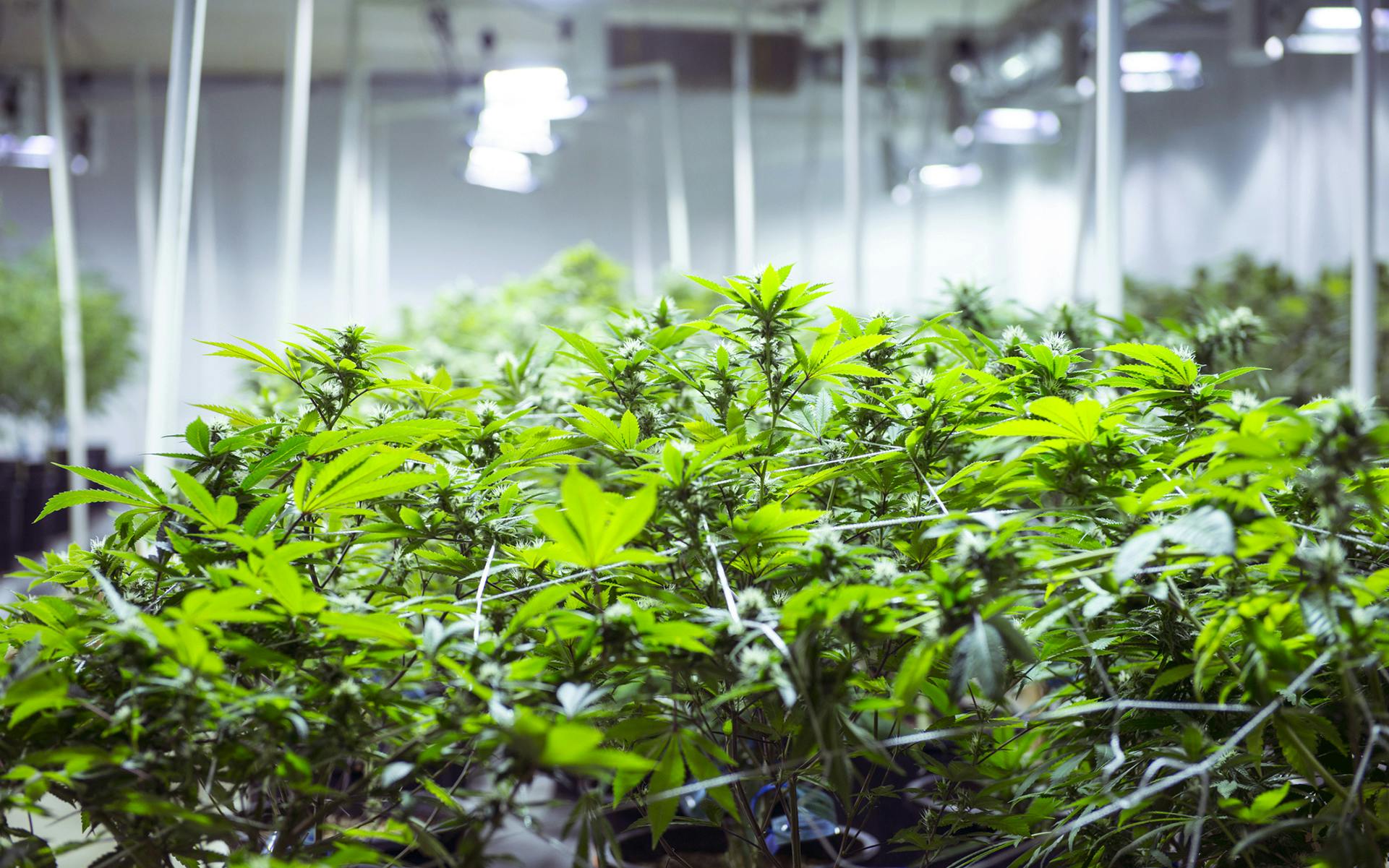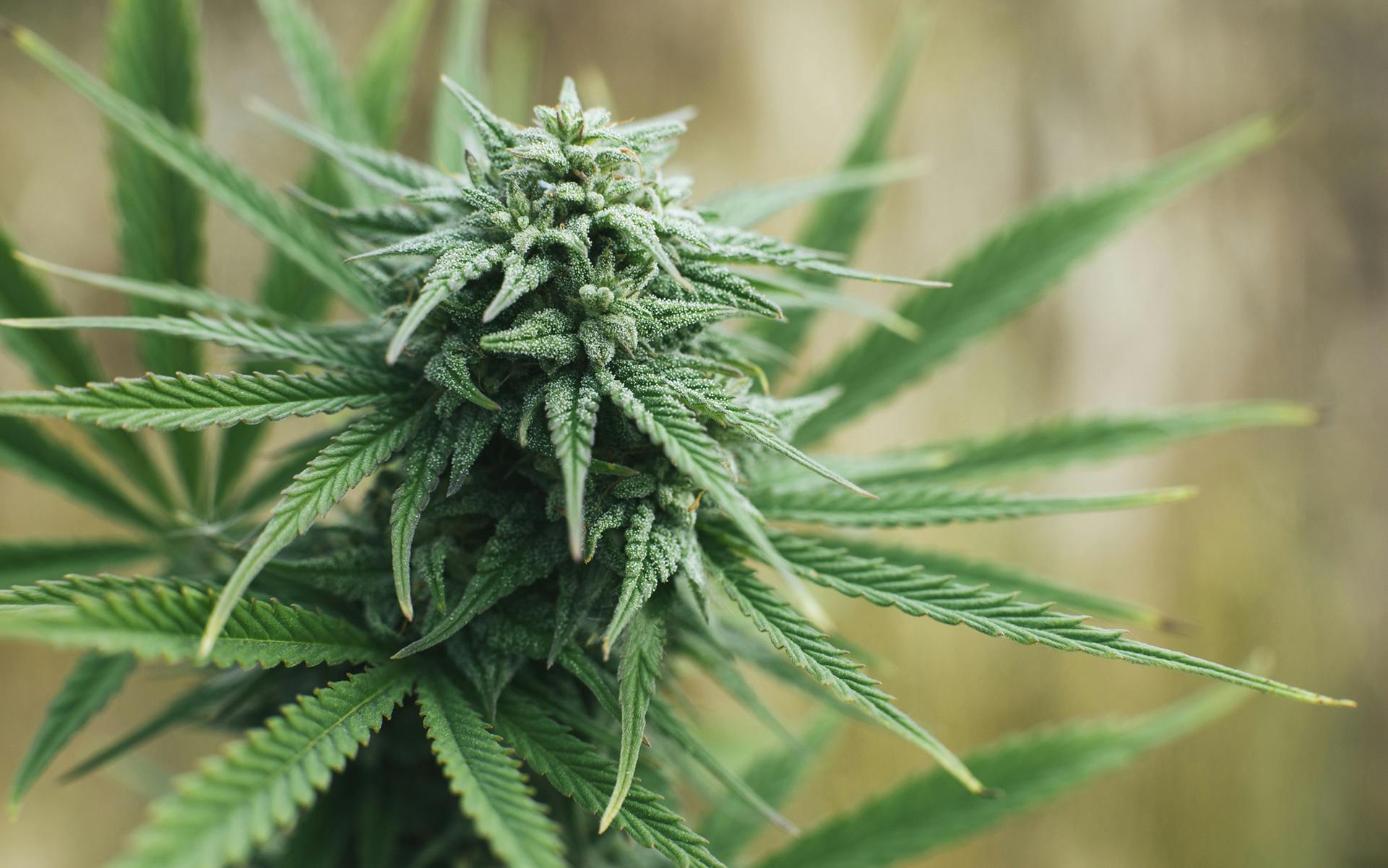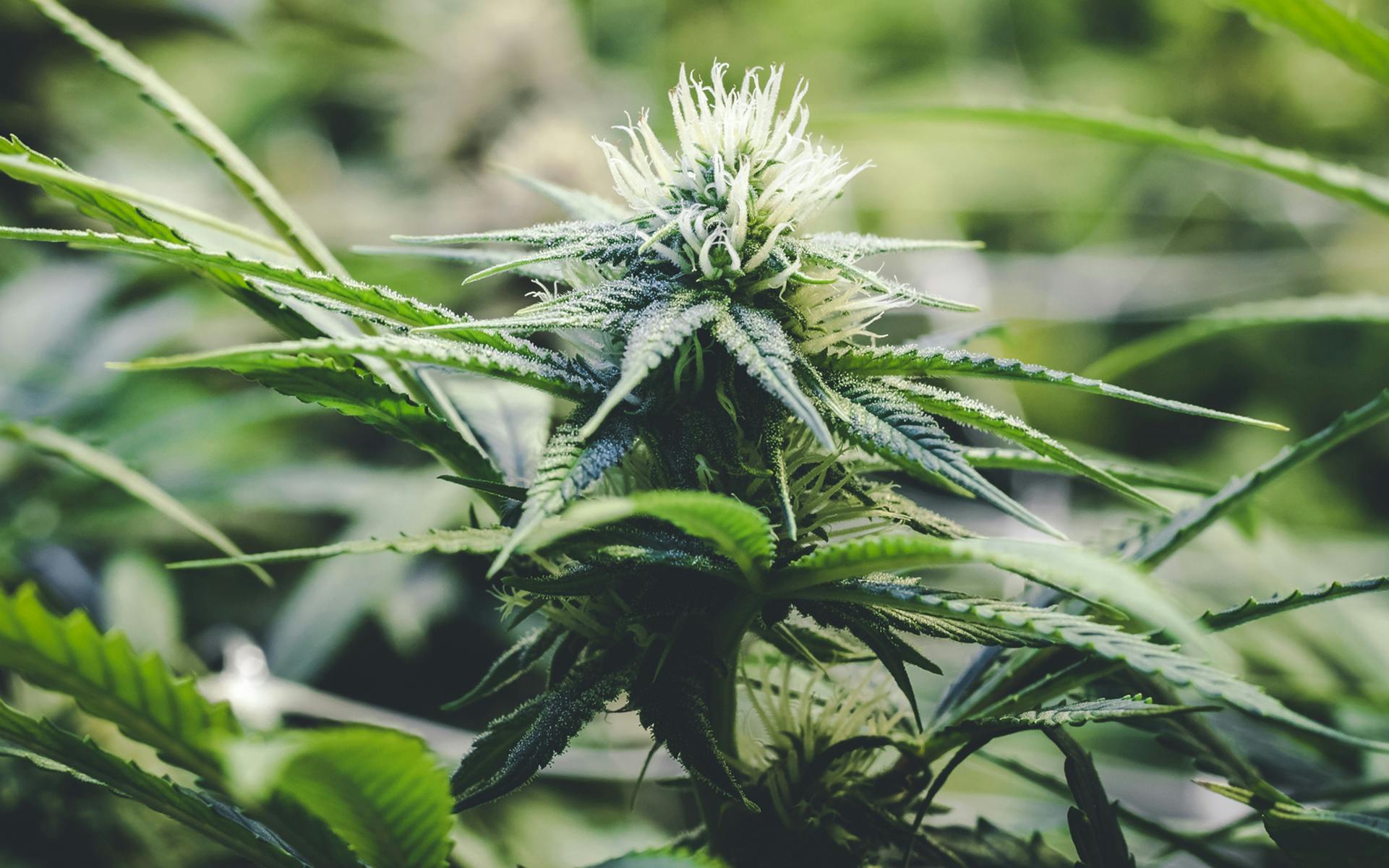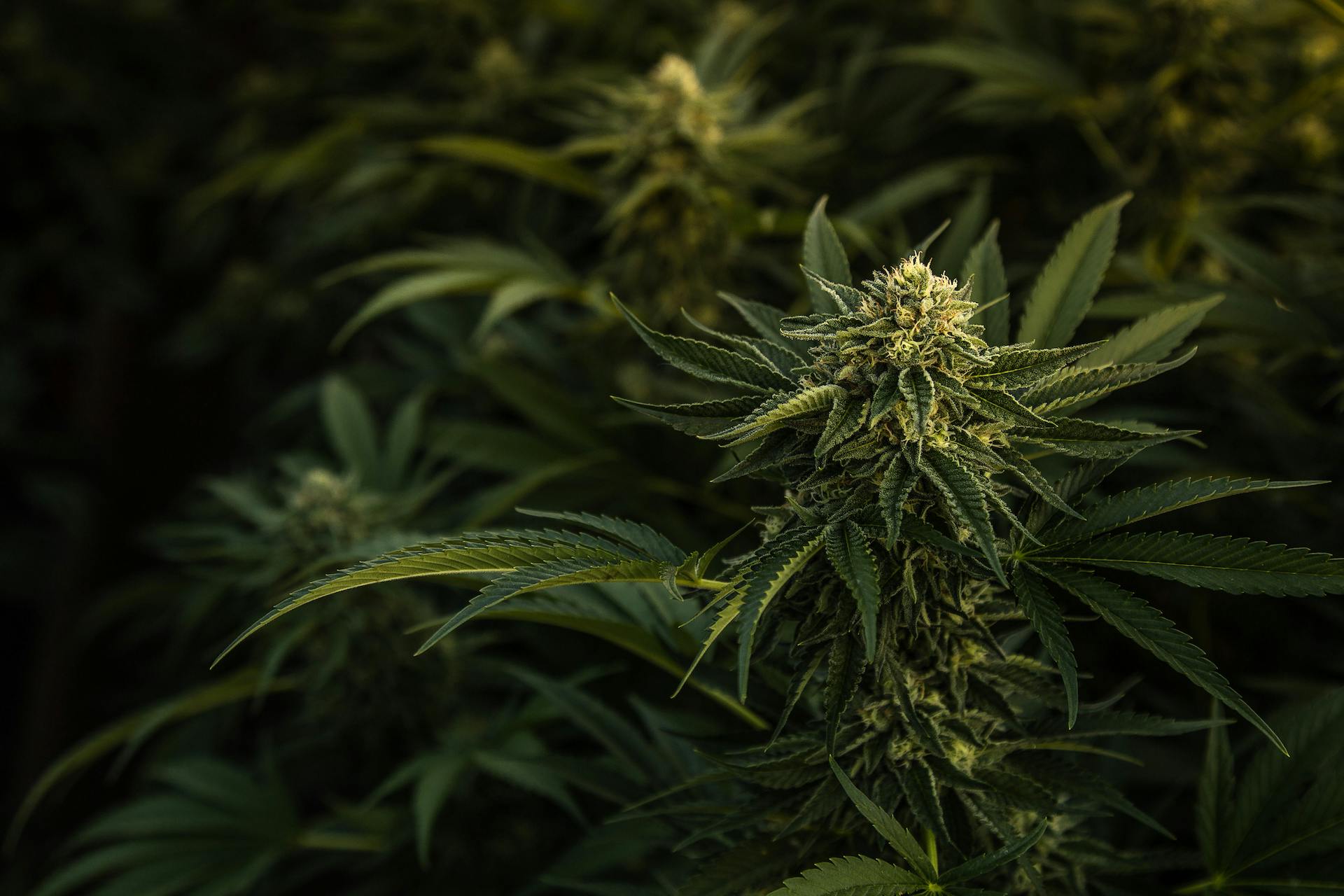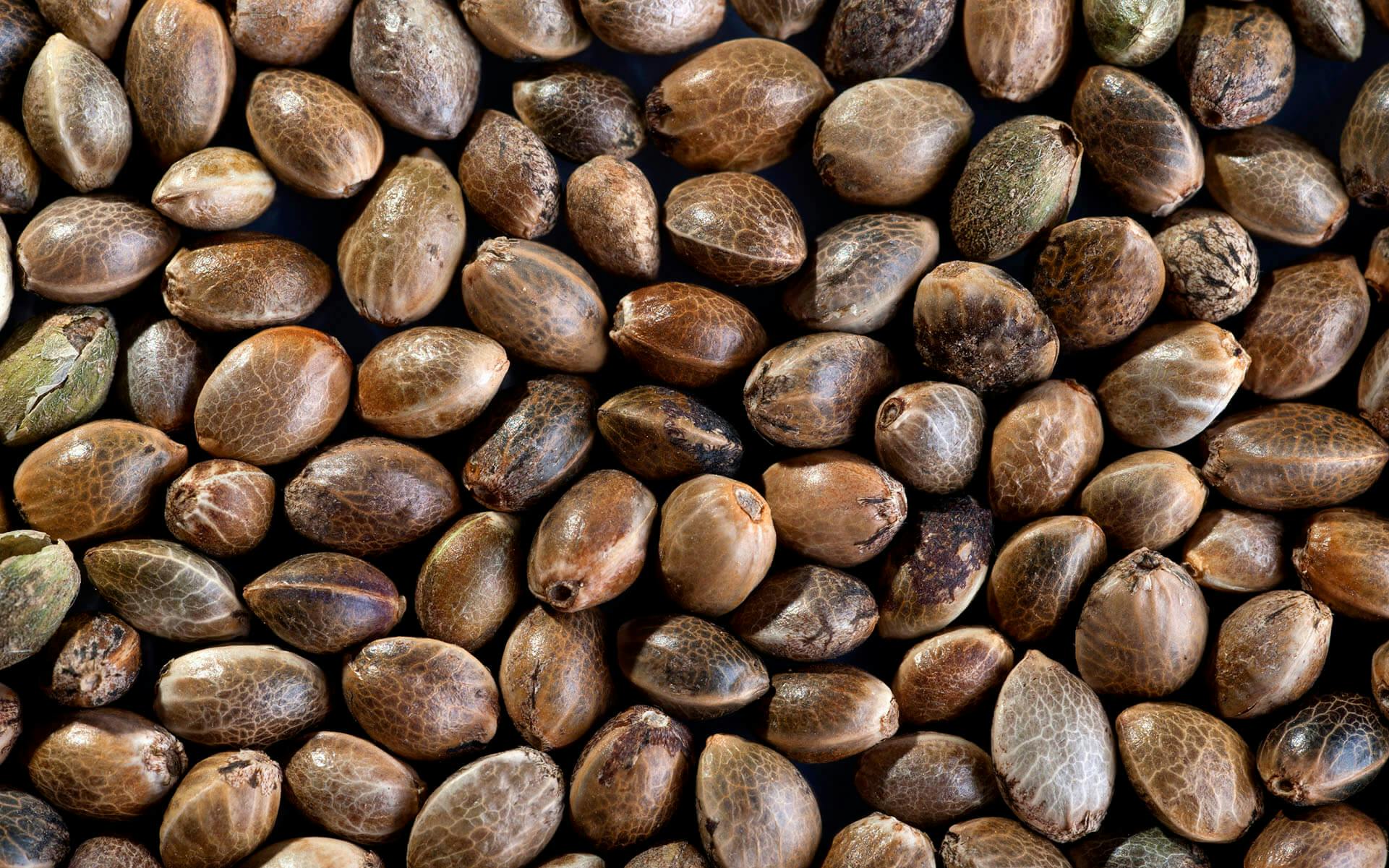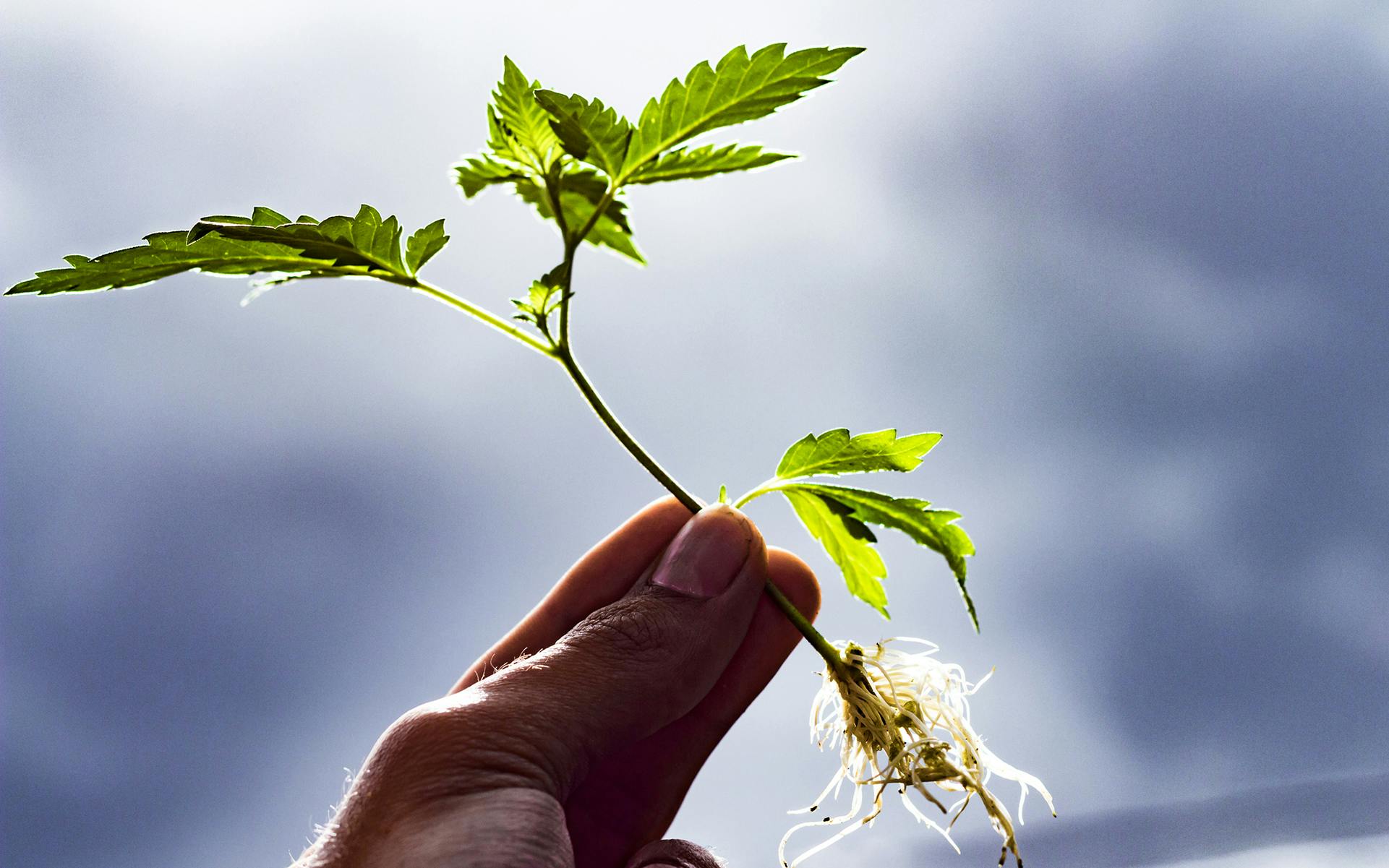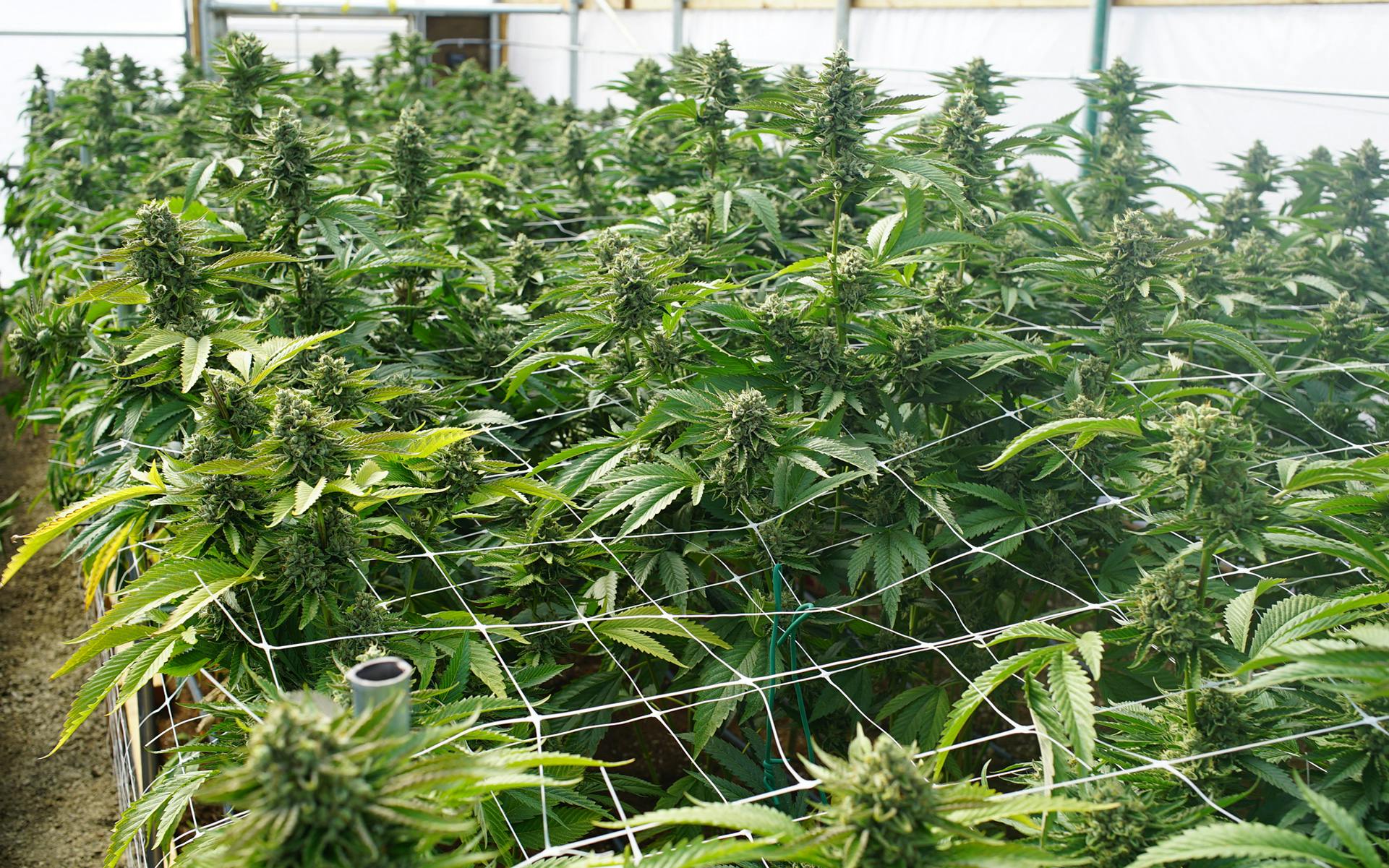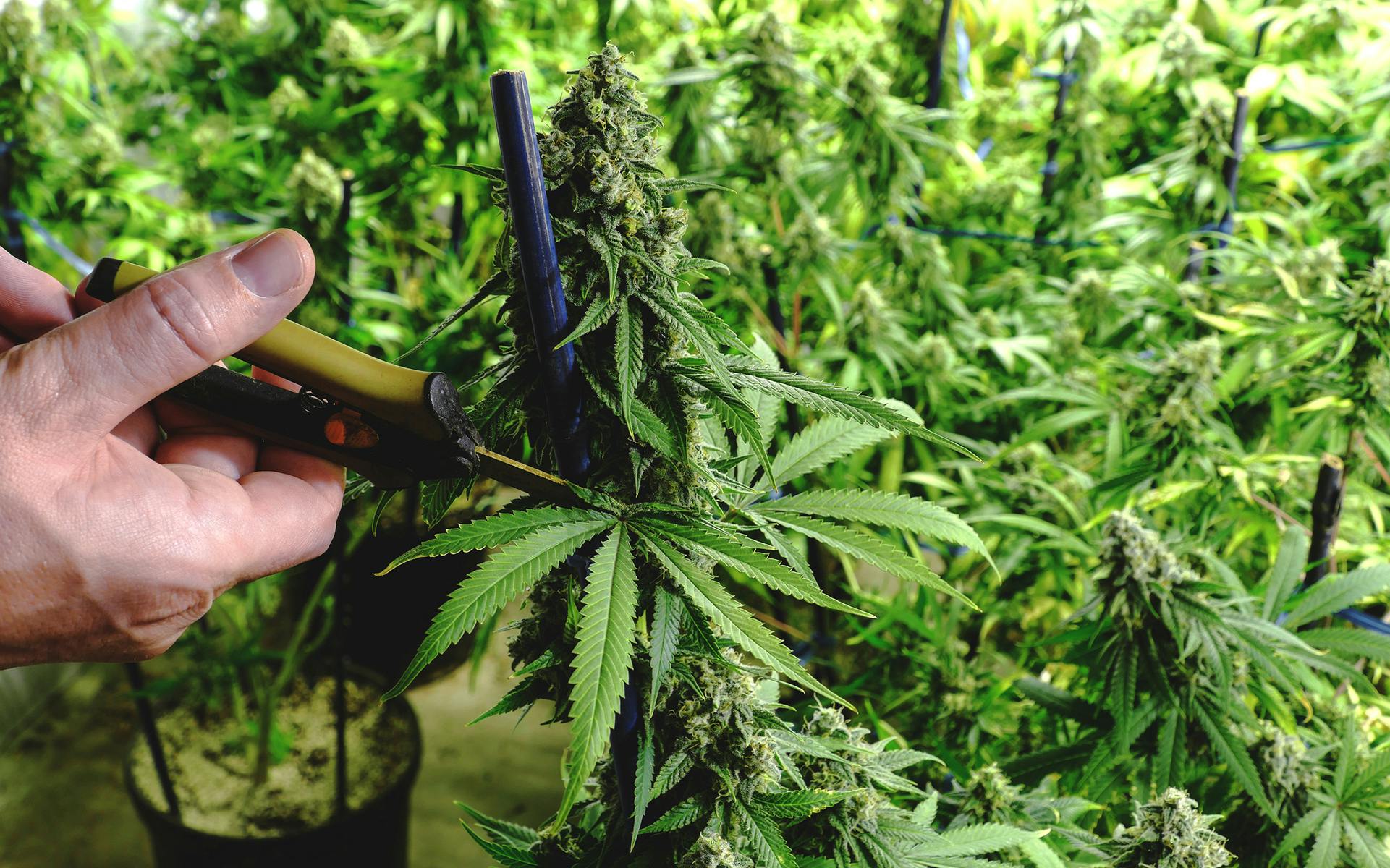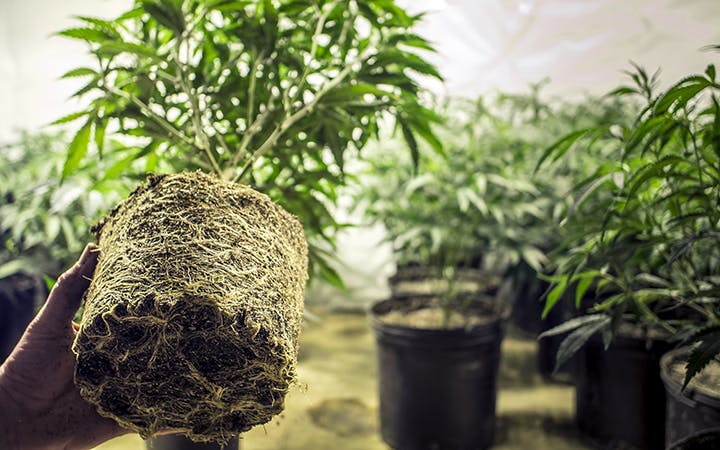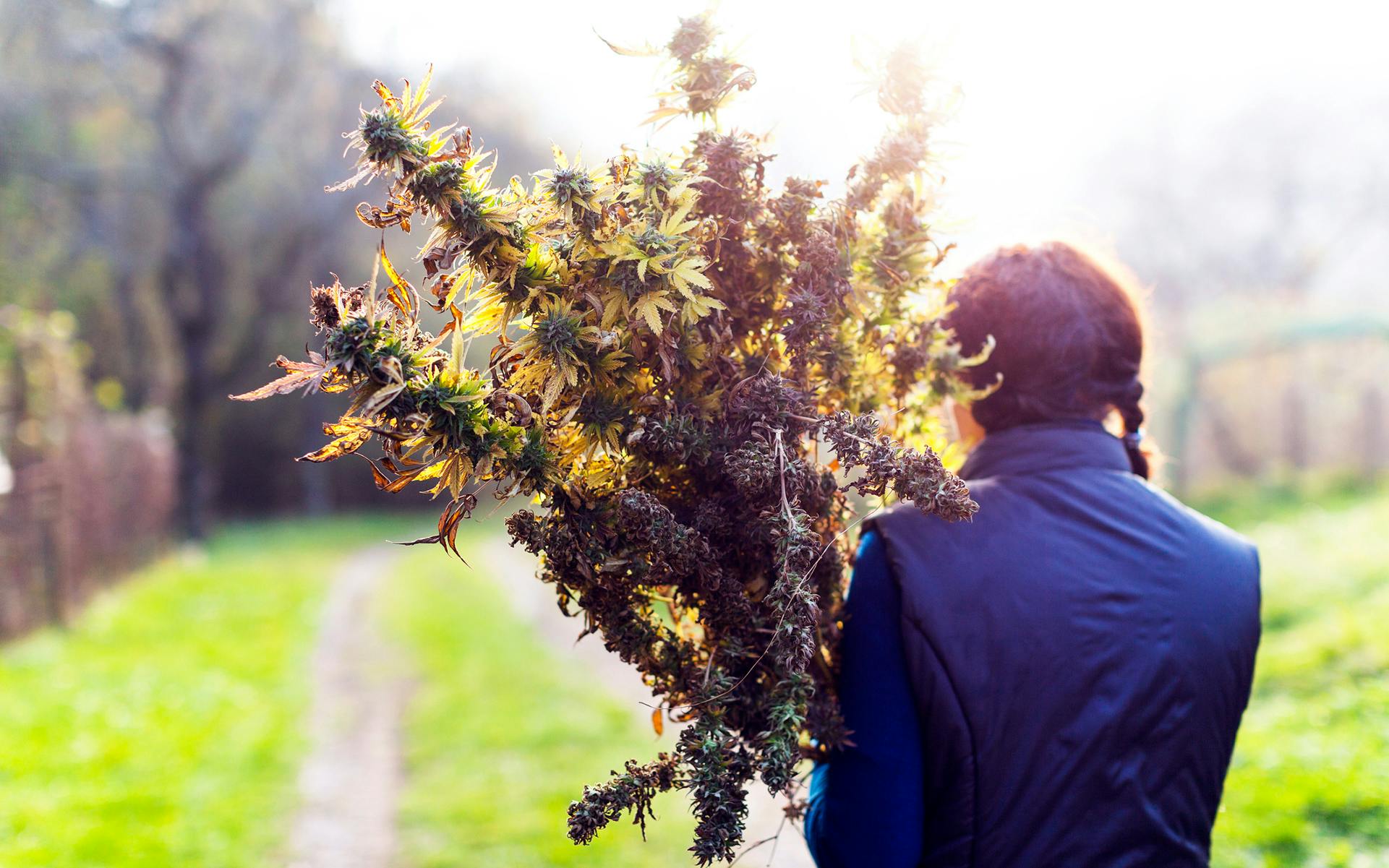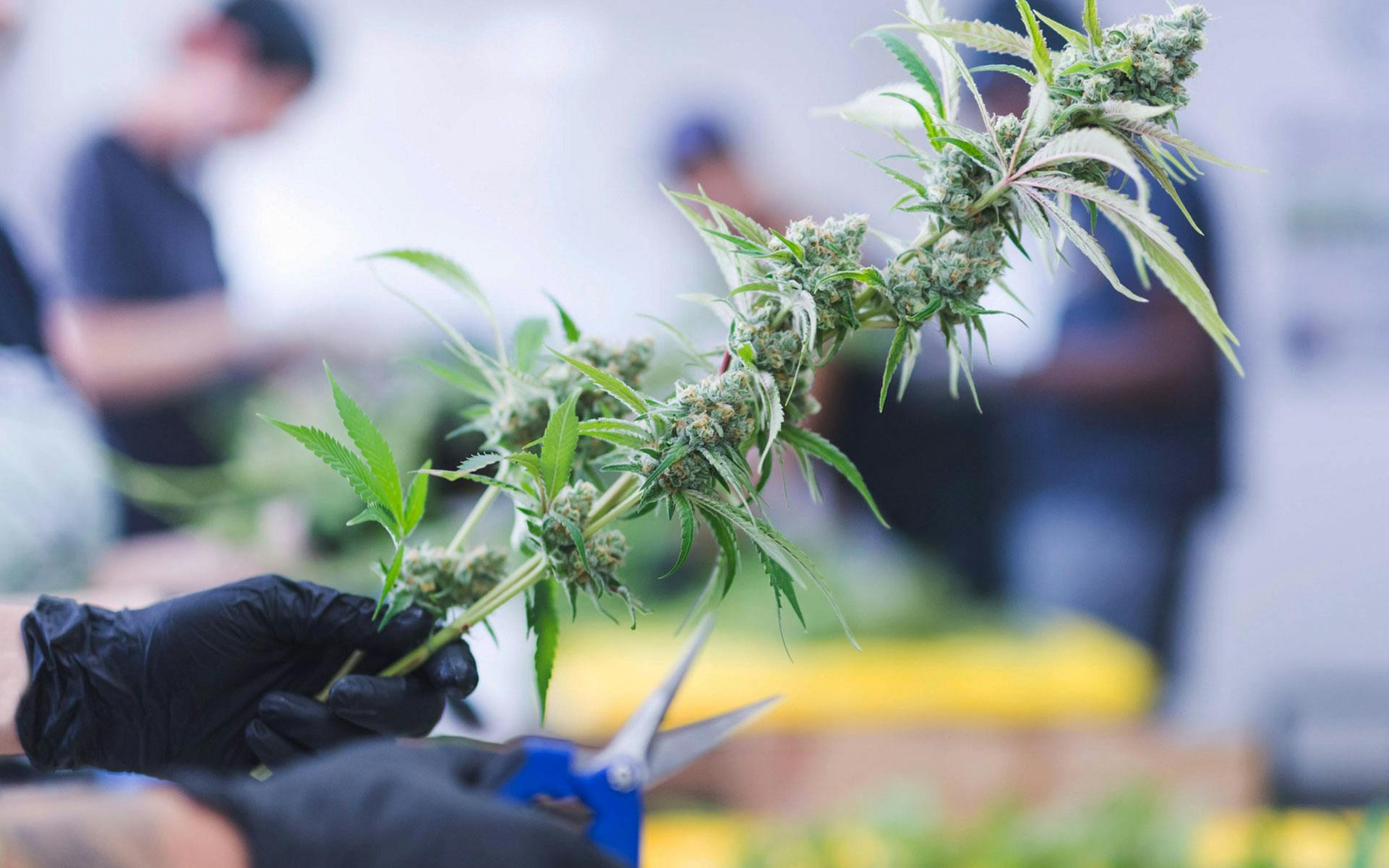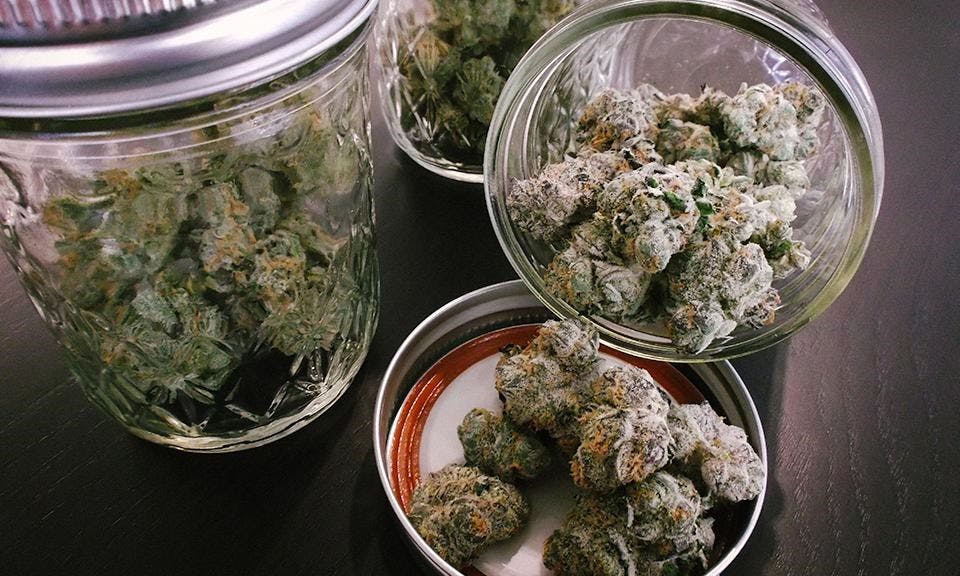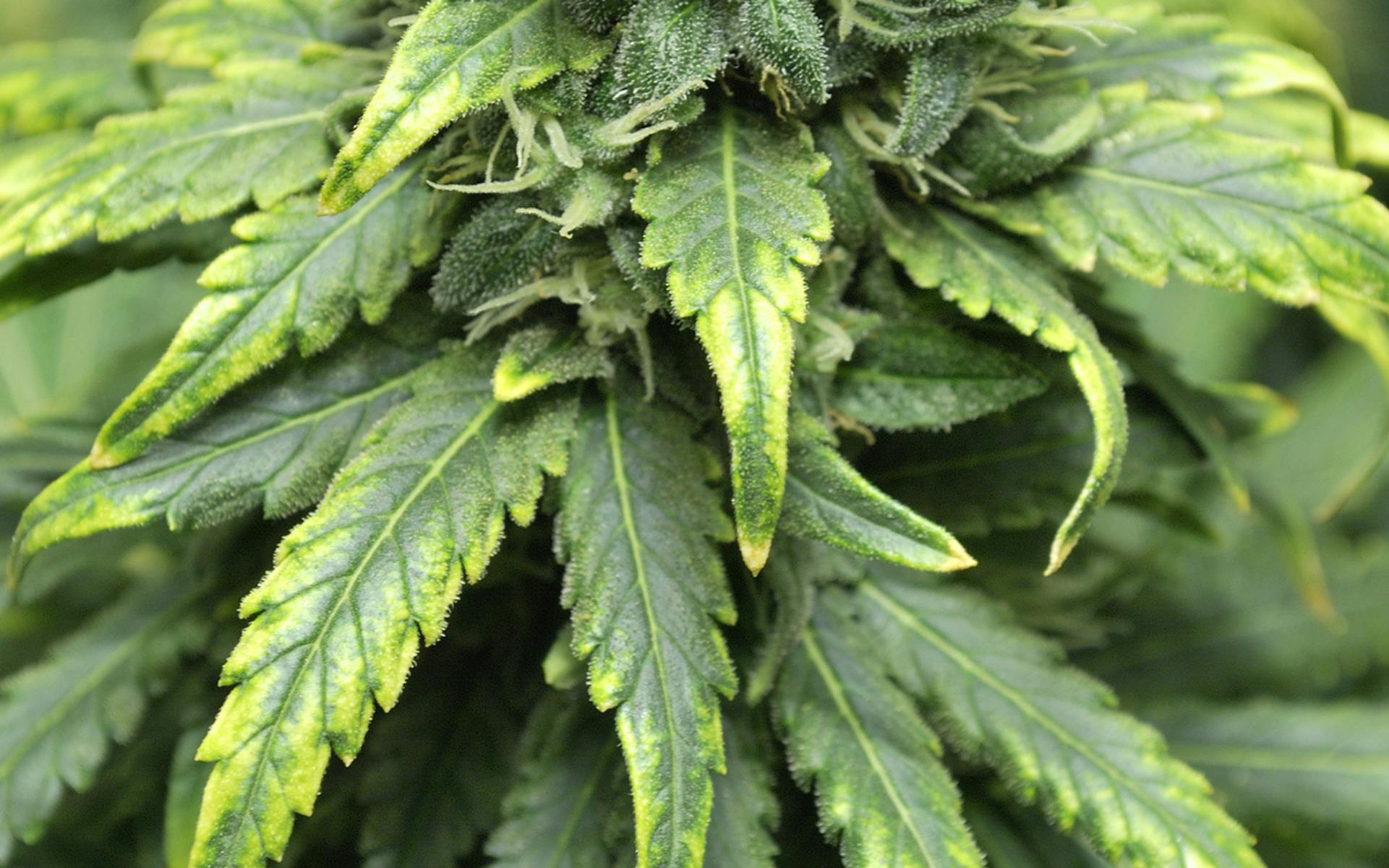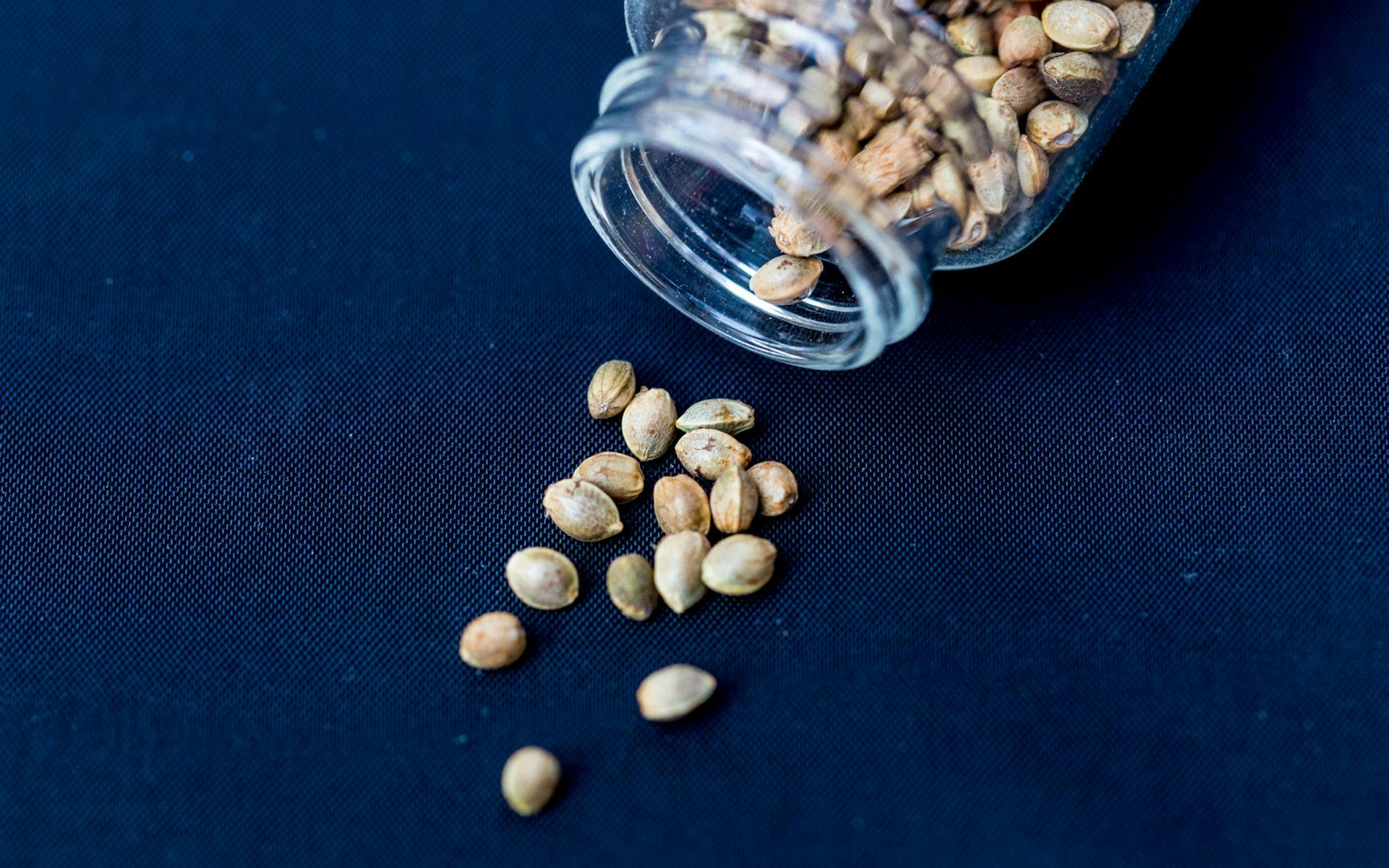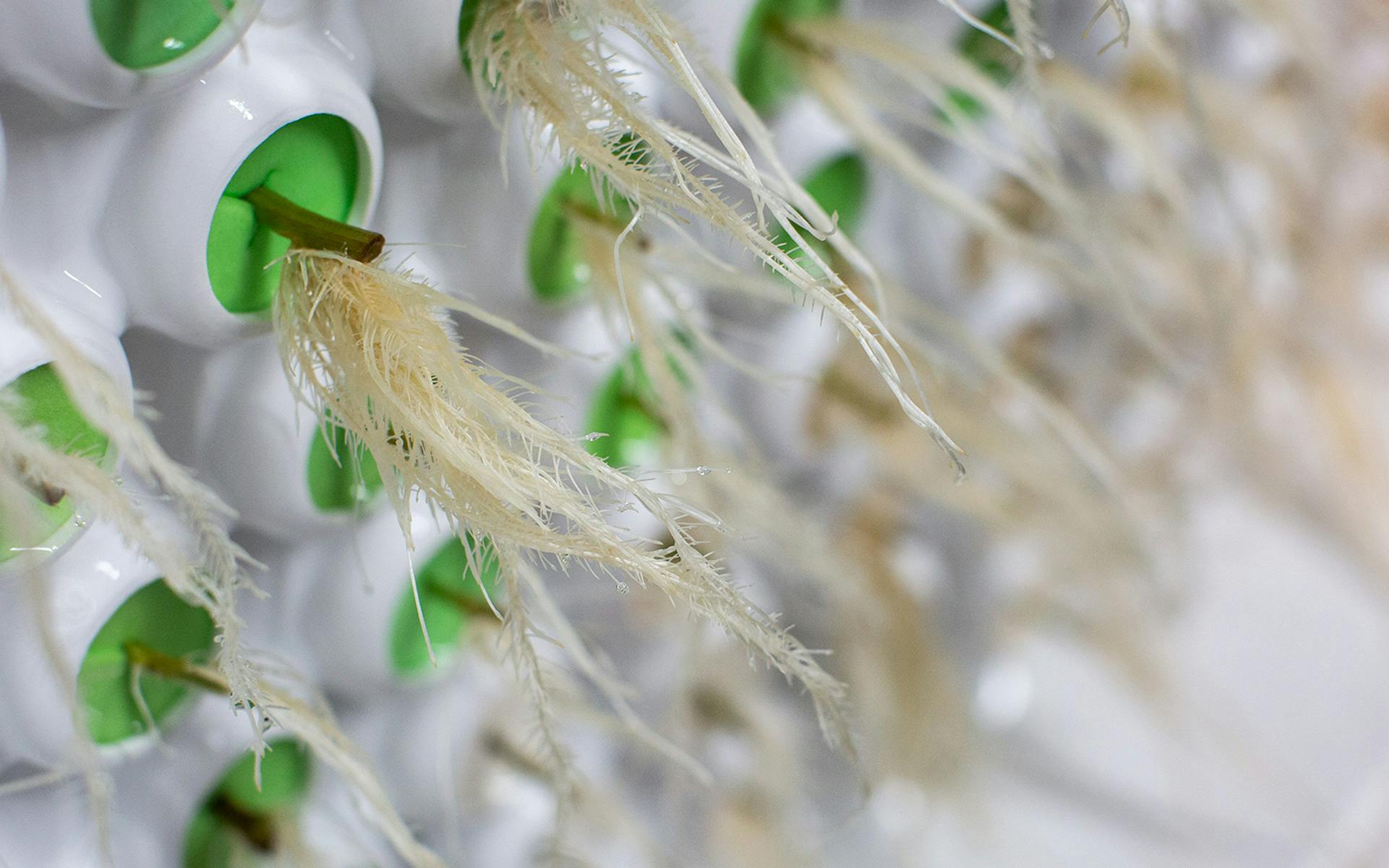Pot Farmer’s Almanac—January: Seeds, hash, and indoor growing
Start from the beginning

Growing weed is super easy—it’s called “weed” for a reason—so don’t worry if you haven’t grown anything before. Our clear, easy-to-digest guide will help growers of all kinds, especially first-time ones.
Whether indoors or outdoors, growing marijuana is fun and rewarding, but it can also be challenging and takes a certain amount of patience, time, and money. We’ll walk you through all the steps of growing, from preparation, to seed germination, plant growth, and harvesting, as well as best practices and how to troubleshoot common problems.
Because the plant was illegal for so long, a lot of grow info has been passed down by word of mouth. There are many myths and traditions about growing weed, so it can be hard to sort good, sound advice from hearsay. Also, because it was illegal, there’s ample information on indoor growing and how to get the most out of a small space by maximizing harvests and training plants.
These are all great resources but not all growers want to put in that amount of time and effort to get a ton of weed—some growers just want to have fun, grow a little weed, and smoke something they grew themselves.
Below are all the topics covered in our growing guide. That is followed by a list of where it’s legal to homegrow in the US and a quick overview of the growing process.
Enjoy, have fun, and learn a tip or two—growing weed is therapeutic and relaxing, and there’s nothing better than smoking weed you’ve grown yourself.
Leafly’s complete marijuana growing guide
Where is it legal to homegrow cannabis?
Before you get started growing, you’ll need to see if you even can grow in your state. Below is a list of states in which it is legal to grow your own marijuana at home, both states with medical and adult-use legal status. If your state does not appear on this list, it is not legal to homegrow in your state.
You might be surprised which states don’t allow homegrowing—only three medical states and one medical territory allow homegrowing at all, and some adult-use states require a medical card.
Check out our Guide to marijuana legalization for more details on homegrowing in your state.
Note that “mature” plants are those in the flowering stage, when plants begin to produce buds; “immature” plants are those in the vegetative stage, before they produce buds. A “household” is defined as two or more people living at a single residence.
| State | Legalization status | Legal to homegrow? | How many plants? |
| Alaska | Adult use | Yes | 6 (3 mature, 3 immature) |
| Arizona | Adult use | Yes | 6 |
| California | Adult use | Yes | 6 |
| Colorado | Adult use | Yes | 6 (3 mature, 3 immature); 12 per household |
| Connecticut | Adult use | Yes | 6 (3 mature, 3 immature) |
| Hawaii | Medical | w/ medical card | 10 |
| Illinois* | Adult use | w/ medical card | 5 |
| Maine | Adult use | Yes | 15 (3 mature, 12 immature, plus unlimited seedlings) |
| Maryland | Adult use | Yes | 2 |
| Massachusetts | Adult use | Yes | 6; 12 per household |
| Michigan | Adult use | Yes | 12 |
| Missouri | Adult use | w/ homegrow card | 18 (6 mature, 6 immature, 6 seedlings) |
| Minnesota | Adult use | Yes | 8 (4 mature) |
| Montana | Adult use | Yes | 8 (4 mature, 4 immature) |
| Nevada | Adult use | Yes | 6; 12 per household |
| New Jersey | Adult use | Yes | 6; 12 per household; medical: 10 |
| New Mexico | Adult use | Yes | 6; 12 per household; medical: 16 (4 mature, 12 immature) |
| New York | Adult use | Yes | 6 (3 mature, 3 juvenile); 12 per household |
| Ohio | Adult use | Yes | 6 plants, 12 per household |
| Oklahoma | Medical | w/ medical card | 12 (6 mature, 6 immature) |
| Oregon | Adult use | Yes | 4; medical: 6 |
| Rhode Island | Adult use | Yes | 3; medical: 24 (12 mature, 12 immature) |
| South Dakota | Medical | Yes | 3; 6 per household |
| Virginia | Adult use | Yes (pending) | Virginians will be able to homegrow 4 plants per household beginning July 1, 2021 |
| Vermont | Adult use | Yes | 6 (2 mature, 4 immature) |
| Washington* | Adult use | w/ medical card | 4 (up to 15 if given authorization from healthcare practitioner) |
| Washington, DC | Adult use | Yes | 6 (3 mature, 3 immature); 12 per household (6 mature, 6 immature) |
| Guam | Adult use | Yes | 6 (3 mature, 3 immature); medical: 18 (6 mature, 12 immature) |
| US Virgin Islands | Medical | w/ medical card | 12 |
*Illinois and Washington are adult-use states but require a medical card to homegrow.
Quick overview of the basics of growing marijuana
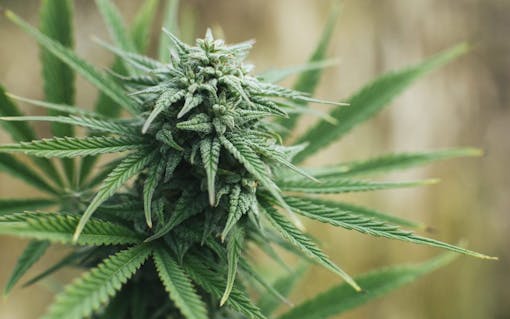
The best way to get quality buds and big yields is to grow strong, healthy plants. Here’s a quick rundown of the most important things you need to know about growing weed:
- Cannabis is a warm-season annual—it thrives in temperate climates, such as Northern California’s famed Emerald Triangle, and it grows and dies each year, having to get planted again the following year.
- It will take about 10-32 weeks to grow a weed plant, depending on the method you choose and how big you want plants to get.
- Before you start growing, you’ll have to determine whether you want to grow indoors or outdoors (more below). You can grow weed pretty much anywhere—it just depends what space, equipment, and resources you have available.
- Marijuana plants start out as either a seed or a clone. Seeds will need to germinate to grow into a seedling. A clone is a cutting taken off a weed plant that you can then grow into another plant, and it will have the same genetic makeup.
- After the seedling stage, a weed plant enters the vegetative stage, which is generally the longest stage of its life. Here the plant will be a main stalk, branches, and fan leaves—no buds yet.
- The magic happens during the flowering stage, when weed plants start to grow buds. Plants enter this stage about two months before harvesting.
- At harvest, you’ll cut down your plants, trim, dry, and cure them, and then your homegrown buds will finally be ready to smoke.
What does a marijuana plant need to survive and thrive?
Having a deeper understanding of the plant itself will help you dial in the growing process to grow the best weed you can. Below are some of the major things a weed plant needs to grow, and how a plant functions.
Light
Light from the sun or a grow light powers photosynthesis and the plant growing process, and fan leaves on a weed plant act like solar panels, soaking up light. Generally, the more light you have, the more buds your plants will grow.
But too much light can be a bad thing. When growing indoors, lights that are too close to plants can burn them and your nugs. And plants with too much heat on them will dry out more quickly, needing more water and care.
Weed plants typically need at least six hours of light a day when growing outdoors—called “full sun”—and when growing indoors, usually receive between 12 and 18 hours of light a day, depending on what phase of growth they’re in.
Weed is a photoperiod plant, meaning the daily amount of light it receives will determine when it flowers—when it starts to produce buds. Outdoors, this happens when the daily amount of light reduces as summer turns to fall, and indoors, growers can control this by changing artificial light from 18 to 12 hours a day.
Water
All plants need water to grow, taking hydrogen from water during photosynthesis. Water also acts as a carrier for nutrients, bringing them from the soil into the plant via the roots, and throughout the entire plant.
Water also supports cells in a plant by creating pressure on cell walls. This makes plants flexible, and allows them to bend in the wind or move to a sunnier spot.
Plants also transpire—similar to how humans sweat—to help cool down. Water evaporates from leaves, appearing as droplets on the tips.
This might be a no-brainer, but it’s important to note that you only need to water the soil or medium of a weed plant, not the leaves or the plant itself. We recommended to water a lot, less frequently, rather than a little bit, more often. This allows roots to dry out and pull in more oxygen from the soil.
Soil/soilless medium
Soil or another medium gives a plant stability so it can stay upright, and also contains most of the nutrients a weed plant needs to grow and produce buds. Out in the wild, nutrients find their way into soil through rain, dead animals and other decayed organic matter, and living organisms, rocks, and minerals in the soil itself.
When growing weed, plants are often supplemented with nutrients—especially when growing indoors—to maximize growth. These can be added to soil as powdered amendments, or as liquids when watering.
Organic cannabis growers often favor living soil, full of microbes and fungi, which many believe help plants uptake nutrients and lead to a more diverse flavor and chemical profile of buds.
Indoor growers often buy soil and put plants in pots; outdoors growers can do this as well, or use pre-existing soil, which may need nutrient amendments.
Other mediums include rockwool, coco coir, water—known as hydroponics—and more.
Nutrients
A weed plant needs many nutrients to grow and bloom. The main nutrients it needs are:
Nitrogen
Nitrogen helps a weed plant grow during the vegetative phase, putting on mass, stems, branches, and leaves. It is part of chlorophyll, so it helps a plant capture sunlight for photosynthesis, and helps make leaves green.
Phosphorus
Phosphorus is essential for storing and using energy, as well as root growth and the development of buds. It helps a plant uptake nutrients to build its structure.
Potassium
Potassium helps with many of a weed plant’s metabolic activities to keep it healthy and growing, and to help it fight off disease
Calcium
A minor nutrient, calcium helps a plant keep its cell walls together, and helps with the absorption of other nutrients.
Magnesium
Magnesium is in chlorophyll, and helps plants create glucose from photosynthesis. Without it, the plant can’t convert sunlight into energy.
CO2
Plants take in CO2 through microscopic holes in its leaves called stomata. During photosynthesis, plants convert CO2 into glucose, and a plant uses that to grow and bloom.
Commercial indoor growers often use a “CO2 burner,” or a device that adds a small amount of CO2 into the environment, which helps plants grow more vigorously. CO2 burners are usually too much for small-scale homegrowers.
Wind/airflow
Wind or airflow’s primary function is to clear out old air and bring in fresh air, mixing it with CO2, which helps plants grow more.
Airflow also reduces mold and disease by clearing moisture from the inside of a plant, so dew doesn’t form. Scrogging spreads out branches to also help plants air out.
Wind or airflow will also help strengthen a plant’s stalks and branches, making the plant stronger and healthier. When a plant bends with wind, a hormone called auxin is produced, which stimulates growth in supporting cells, making it stronger.
Wind is also essential for weed plants to breed and pollinate one another. Male plants have sacs that release pollen when the plant matures, and wind will carry it to a female plant to pollinate it.
Of course, too much wind is a bad thing, and a storm or fans set too high can blow over and damage plants.
Temperature and humidity
Weed plants like temperate conditions. Generally, in the vegetative phase, thisn is 70-85°F, with 40-60% relative humidity. In the flowering phase, this is 65-80°F, with 40-50% relative humidity.
Indoor vs. outdoor marijuana growing

Your homegrowing journey starts with the question: indoors or outdoors?
Growing outdoors is the cheapest and easiest way to grow, because you can utilize the power of the sun and other natural resources, but you need the proper space to do it, and the space needs to be able to get ample sunlight throughout the growing season. Often, you can let plants grow large and get big yields with more space outdoors.
Growing weed indoors is more expensive because you’ll need to spend money on equipment and utilities, but you can control every aspect of the grow environment and set up an indoor grow almost anywhere. Expect to grow some killer weed—indoor is known for its potency and quality.
How to choose a marijuana strain to grow

At the end of the day, you want to grow a strain you like. A single plant can yield between a half-pound and a full pound of dried buds, depending on how big your plants get, so you’ll have a lot of it come harvest time.
The last thing you want is to put a ton of time and effort into growing weed and end up with a strain that you don’t like. Everyone has different tastes and preferences, and strains affect people differently.
Other factors to consider when picking a strain to grow
- Availability: The legality of cannabis in your state will determine whether you can buy seeds or clones at a dispensary. Even if you can, you’ll be limited to genetics that are only produced in your state, as seeds and clones can’t cross state lines.
- Climate and environment: Certain strains benefit from open space and are easier to grow outdoors, and some grow short and stout, making them great for indoor growing. Additionally, some strains need more attention and are more susceptible to pests and may benefit from a climate-controlled environment. It’s a good idea to talk to other growers in your community to see which strains grow best in your climate.
- Garden space: Cannabis can be grown successfully in small or large spaces, but it’s important to know how much space you have to work with before you start building out a garden. For example, if growing in a small space, consider growing indicas, which tend to grow shorter and bushier.
- Length of time to grow: Some strains take longer to mature than others. If you want a quick turnaround, aim for strains that take 8-9 weeks to flower instead of 12. Autoflower cultivars will be a lot shorter.
- Difficulty of growing: Difficulty equates to more care and attention, which can involve a more complex nutrient regiment, more training requirements, and perhaps paying more attention to environmental factors. These all take time, patience, and research to master, especially if you don’t have much growing experience.
Pat Goggins and Patrick Bennett contributed to this article.
Read more of Leafly’s guide to growing marijuana
- How to grow weed: Basics of growing marijuana
- 4 stages of marijuana plant growth
- Marijuana plant anatomy
- How much weed can you get from growing one plant?
- How to grow weed indoors
- How to grow marijuana outdoors
- How to set up an indoor weed homegrow for under $500
- Top 6 weed strains to grow indoors
- Cannabis seeds 101: How to grow marijuana from seed
- How to clone cannabis plants
- Marijuana seedling and plant care
- How to top and prune marijuana plants
- How to scrog marijuana plants
- How and when to transplant cannabis plants
- How to harvest marijuana plants
- How to trim marijuana
- How to dry and cure cannabis
- Troubleshooting common cannabis plant problems
- Marijuana plant nutrient deficiencies
- Buyer’s guides for cannabis seeds and growing equipment
Ready to start growing your own marijuana?
Buy marijuana seeds on Leafly.
By providing us with your email address, you agree to Leafly's Terms of Service and Privacy Policy.
